So while waiting for Stefaan’s root canal appointment and the final work on our diesel tanks early February, we took a break and headed out on a trip down memory lane – going north to Thabazimbi, where we had lived for 5 years in the late 1980’s.
There is only the one road going to Thabazimbi and nothing had changed there… still the same road! But all sorts of details along the road had changed. Driving through Brits is a bit depressive, but luckily you hit the fields and wide open spaces soon enough: the 130km between Brits and Thabazimbi is a long road with nothing. I mean: no villages or settlements. There is the odd one petrol station and maybe a few farm stalls, but for the rest it’s fields, fields and more fields. The road is (in places) quite deteriorated like so many roads in South Africa, with potholes that would make it quite dangerous to drive at night.
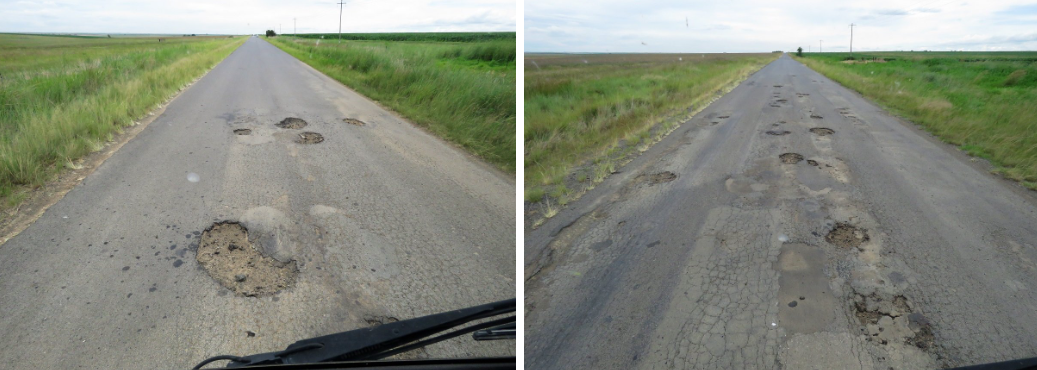
- Besides the traditional maize fields, we also saw peanut fields (at least that’s what we thought – later it proved to be soya fields) and fields of prickly pear cacti. This particular cactus grows a fruit that’s suitable and loved for human consumption. Normally they grow wild in the bush and, in season, you see locals sitting with a bucket along the roadside, hoping to sell a few. This field however was a proper agricultural endeavour with the cacti planted in neat rows. We wonder if this crop would- financially- be as feasible as maize or cabbage? Closer to Thabazimbi we remember passing cotton fields 30 years ago, but now we saw none. We don’t know if the cotton season was finished and they rotate other crops? The area was surprisingly green.
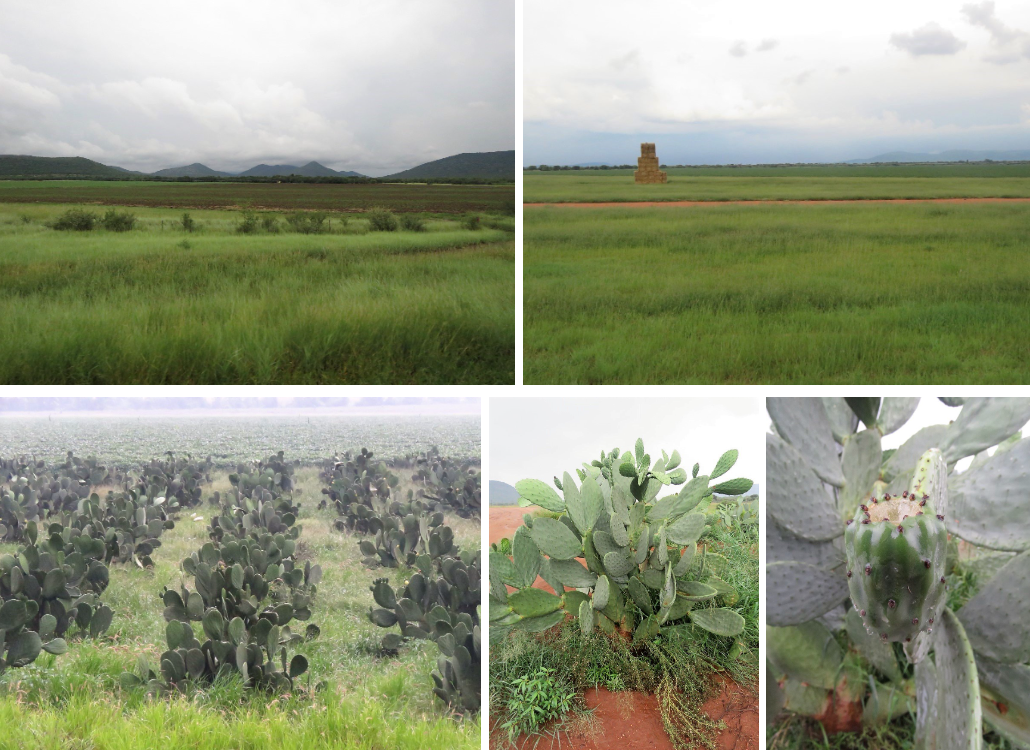
- Besides agriculture, the area between Brits and Thabazimbi (especially the closer you get to Thabazimbi) is ‘game world’. And game farms and wilderness lodges are serious business. We saw various entry gates to game farms and safari lodges that were beautifully appointed. And some were quirky and fun! On various farms closer to Thabazimbi we saw simple white crosses on the gates. We never got to ask the meaning, but we surmised it may have something to do with the farm murders.
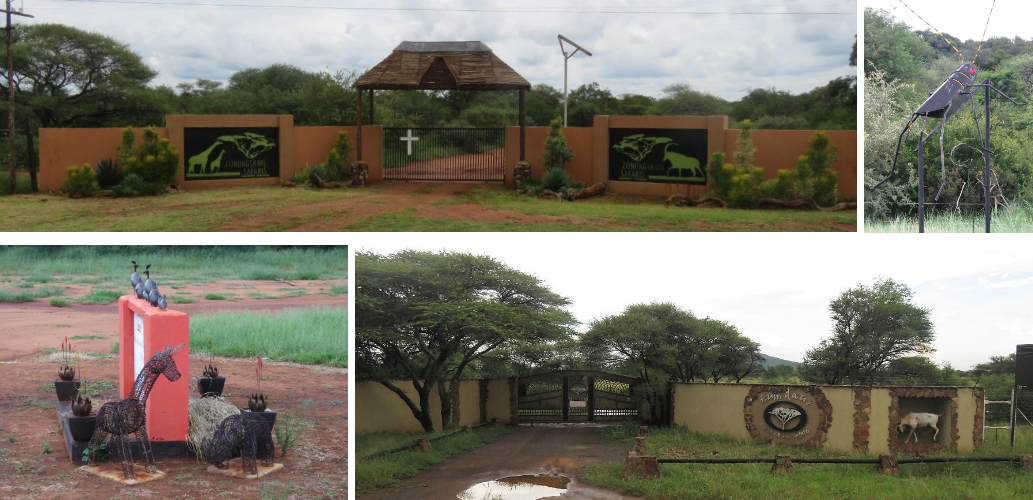
- The last stretch into Thabazimbi, we could see how much the mining industry has effected the landscape. Whole parts of the mountains have been “reshaped” by the mining. And there is a constant flow of heavy mine traffic on the road (adding to the deteriorating of said road – when we slept over at Beestekraal Stasie Farmstall on our return trip, we were amazed at how busy this road is from really heavy trucking.)
And then there it was: the “Welcome to Thabazimbi” sign, that was unchanged from when we left 30 years ago!
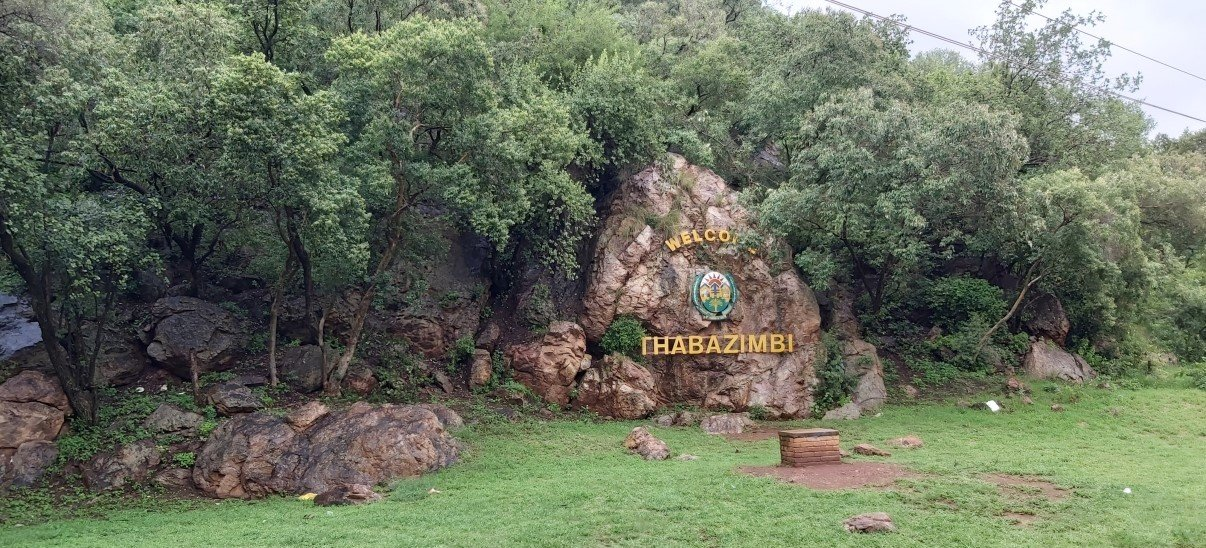
Our first impression … green, green, green! Almost tropical!
And we were surprised to see that Thabazimbi has a Mall! When we left in the early 1990’s the complete population count was about 5000 people and there was just one Checkers, a Pep store and a Link pharmacy as far as franchises go and a variety of locally owned stores and professional services and minimal medical facilities! Our youngest son was delivered by a veterinarian. (ok – he was a qualified obstetrician too).
We took a slow drive through town, looking for the two houses where we had lived (the 2 green stars on the map).

The last one, on the river side, was almost unrecognizable. “Our” house had now expanded with a garage on the one side and another room on the other side. Our house constituted only the section where the solar panels are now. When we lived there our house had been the only one on the wide and dry riverside (we could see the houses on the other side and the rest of town up the mountainside). Now the street is fully build up with mature trees lining the gardens and when we later passed over the bridge we saw a riverbed that was so congested by vegetation that you couldn’t see any of the houses (which should be visible on the right hand side of the riverbed).
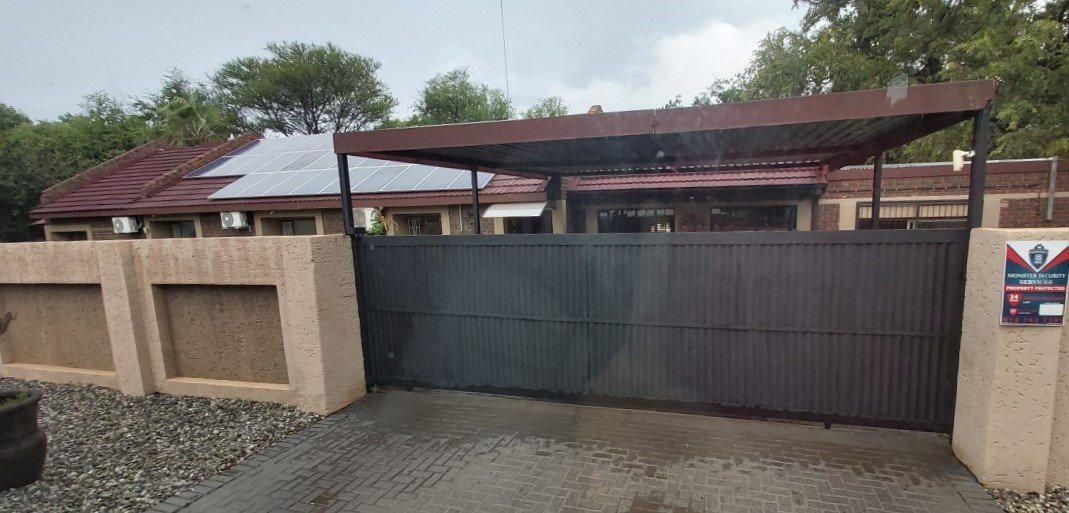
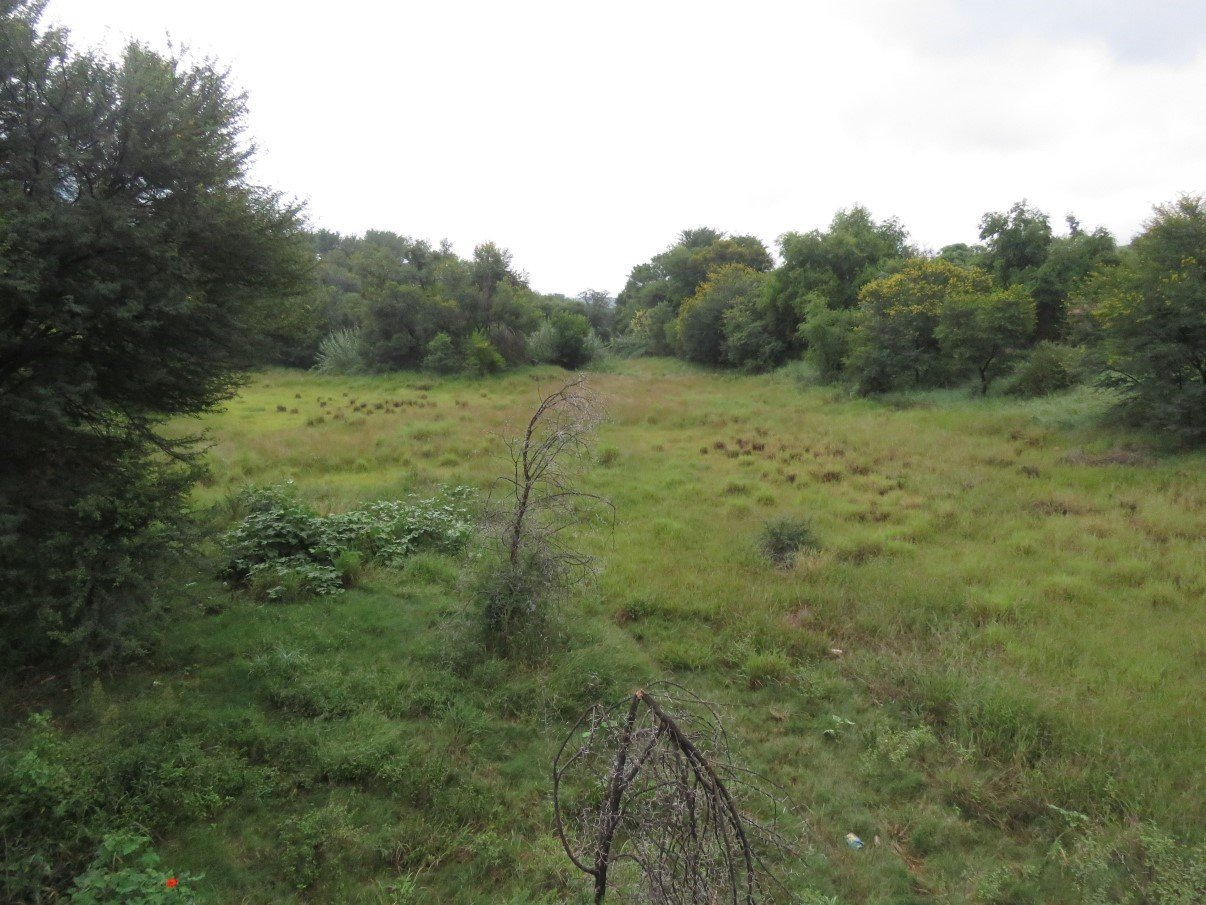
The first house we stayed in- which was rented by Stefaans company while he was resident engineer on the road to Dwaalboom- still looked the same bar a few details: the biggest being that the front yard is now grass instead of concrete.
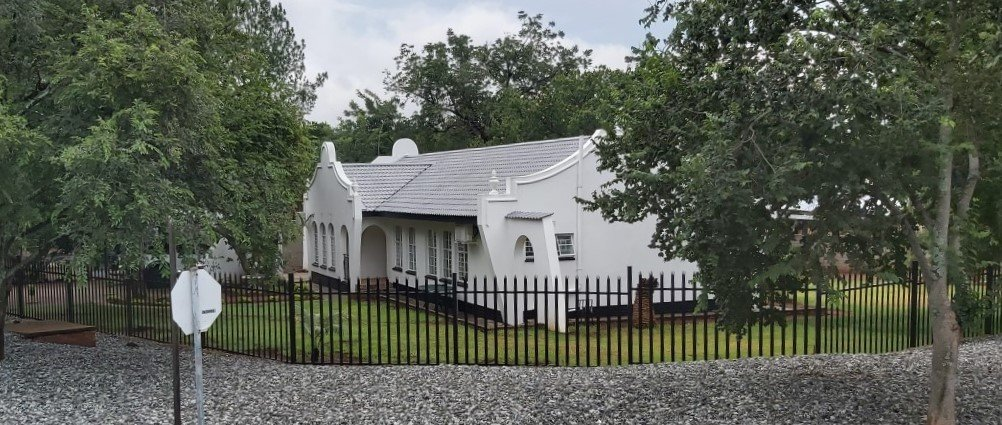
When we lived there, Thabazimbi consisted of the old mine town (southern most section on the map) and the newest development was happening between the river and the main road. At that moment the other side of Hamerkop street (the yellow section) was vacant and, in our days, empty and dry, with the air strip a barren lane in an as barren landscape. Now even that side has been developed with houses and residential complexes and shops. It really felt weird!
We took a drive up to the older part of town on the mountain side trying to recognize places. I must admit that it wasn’t so easy. Although names and places sounded familiar, to really see it as we remembered it… not so much.
One of the iconic places we remembered form the old days was a restaurant from the Iscor mine club: Madalasite. We had planned to maybe have supper there to celebrate our trip down memory lane but couldn’t find it. When we asked a local if our memory was possibly playing tricks with us, she said that it had closed down aeons ago. She had to admit that things had gone a bit downhill in town and referred us to the one spot that she recommended for supper, just outside of town: Khaya Kwa, just opposite the Marakele National Park. As we wanted to go to the park in any case, we followed her advice, drove up the road, parked Trokkie at Khaya Kwa, had a proper bushveld meat supper and had a chat to the owner, who conceded with our other local that Thabazimbi is not what it was so many years ago.
Next morning we got up bright and early and entered Marakele National Park at 6am. We booked for two nights and set off, hoping to see lots a wildlife. Marakele, however, is a “virgin” park. It is only about 15-20 years in the making, which implies a definite difference from established parks like Kruger or Addo.
Things that were a bit of an issue:
- We don’t know how much wildlife is in the park. It boasts with the big 5, but we only saw Rhino. Yes, we know: sometimes you’re lucky and sometimes you’re not! It’s just the luck of the draw. With the extreme rain of the past weeks the soil was very muddy, which made it a perfect canvas for tracks: even when we didn’t see them all, the tracks proved they were there!
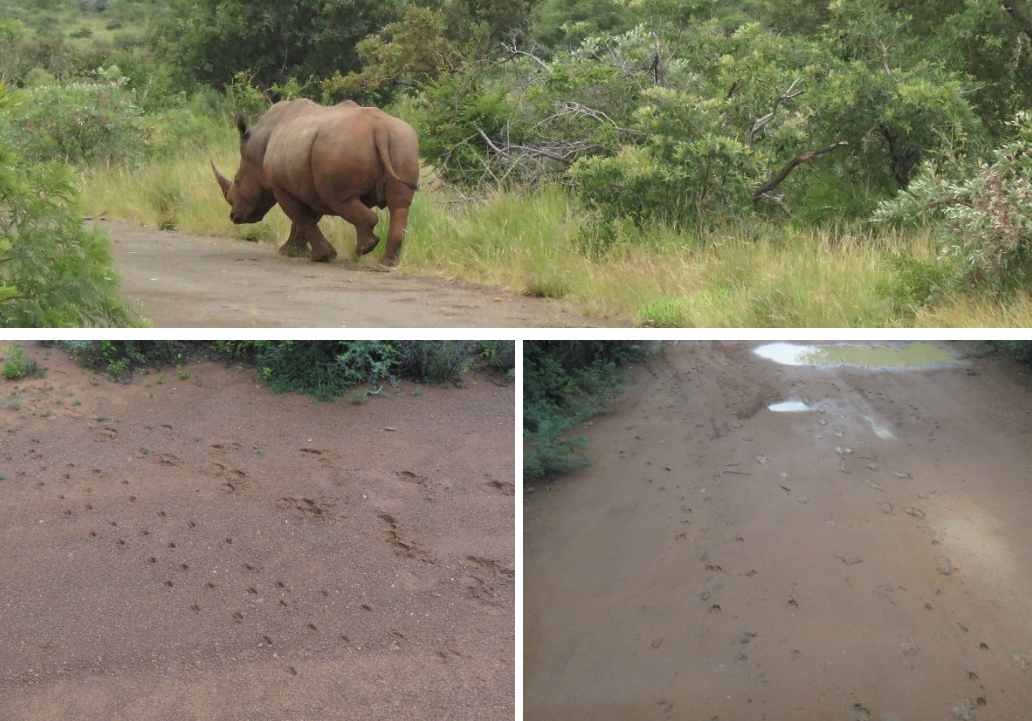
- The park is divided in two section: a smaller part that houses the non-dangerous animals and the bigger section where the Big 5 roam free. The link between the two is a tunnel with electrified gate under a road. Luckily the tunnel is graded 4,2m high… so we could get through. Although I initially was a bit worried to get stuck, when I video taped our passing through the tunnel later, I got much more relaxed, realising how much space we still had on top of Trokkie. Having passed through the gate into the Big 5 part of the park, there is unfortunately only one road and one loop. Add to this that we presume that the animals are not yet as blasé about visitors as perhaps in Kruger or Addo parks, they are therefore shy and skittish. So, once you tried to slowly come closer, animals would get edgy and disappear in the bush.
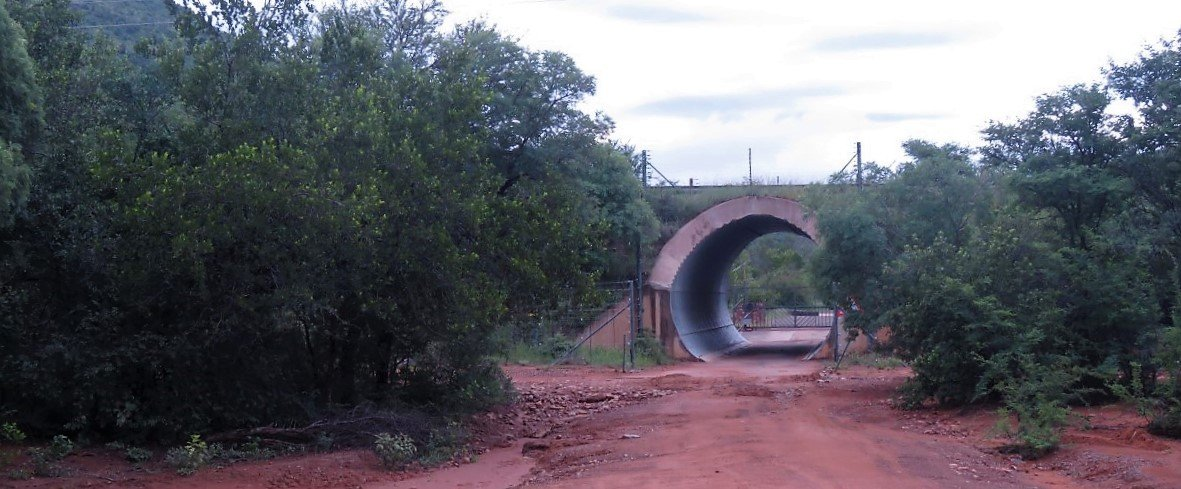
- In the part of the park where the non-dangerous animals live there are more loops but signage is not always clear. At one stage we got stuck on a little track that passed an old graveyard but a bit further we had to wobble our way over an extremely rutted road and ended up at a dead end. As it had been raining almost continuously for the past few weeks, some of the muddy roads were deeply carved and proved a slippery traverse with Trokkie wobbling at dangerous angles. I got my fare share of scary moments – again.
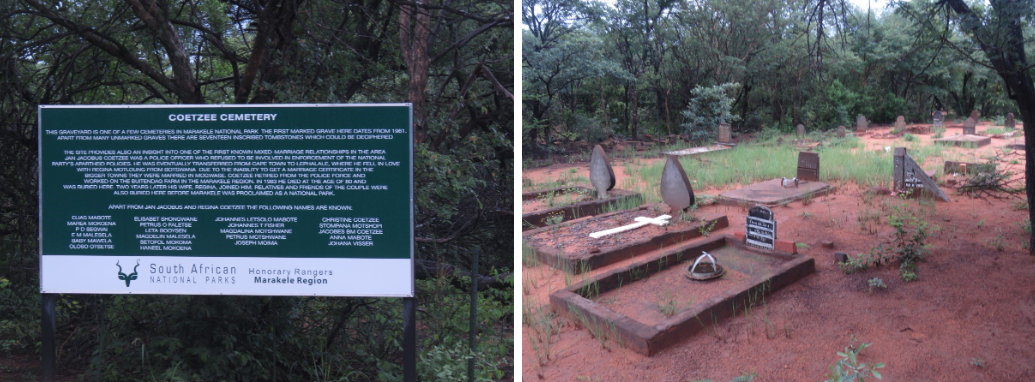
The things that are cool in the park:
- The Lenong View Point is amazing. (watch here videos courtesy of Mountain Passes of South Africa). The road up to there is narrow and steep, with its fair share of ravine drops. The lady at the entrance had explained how the park was laid out and had her doubts about Trokkie being able to make it to the viewpoint. Her words: “It’s very narrow and steep”. And yes… she was dead right. It was indeed very narrow and steep. At one point we met the ranger coming from the top and the only way we would be able to pass was to swop sides of the road: us going on the inside and him going on the outside. The outside was a soft verge- a little-lay by of built up rocks- and there was no chance in hell that we would be driving on that side with a 12 ton truck. I already had visions of the wayside crumbling away under Trokkie’s weight. As we started the little dance of moving closer and forward one centimeter at the time, Trokkie came to within milimeters of the rock wall while the ranger moved around us- on the soft verge- VERY slowly! I think he was very relieved when he had passed us and could go back to the middle of the road. I got out to keep an eye on things as they passed, because I knew it would be a very tight fit!
- But the scary trip was worthwhile! The views the top were amazing. The weather was cloudy and rainy, which made for a kinda spooky atmosphere, but when the clouds lifted and the odd tiny ray of sunshine was able to break through, the valley was just spectacular. It looked like a smaller version of the Un’goro crater in Tanzania (what we’ve seen on photos), but without animals.
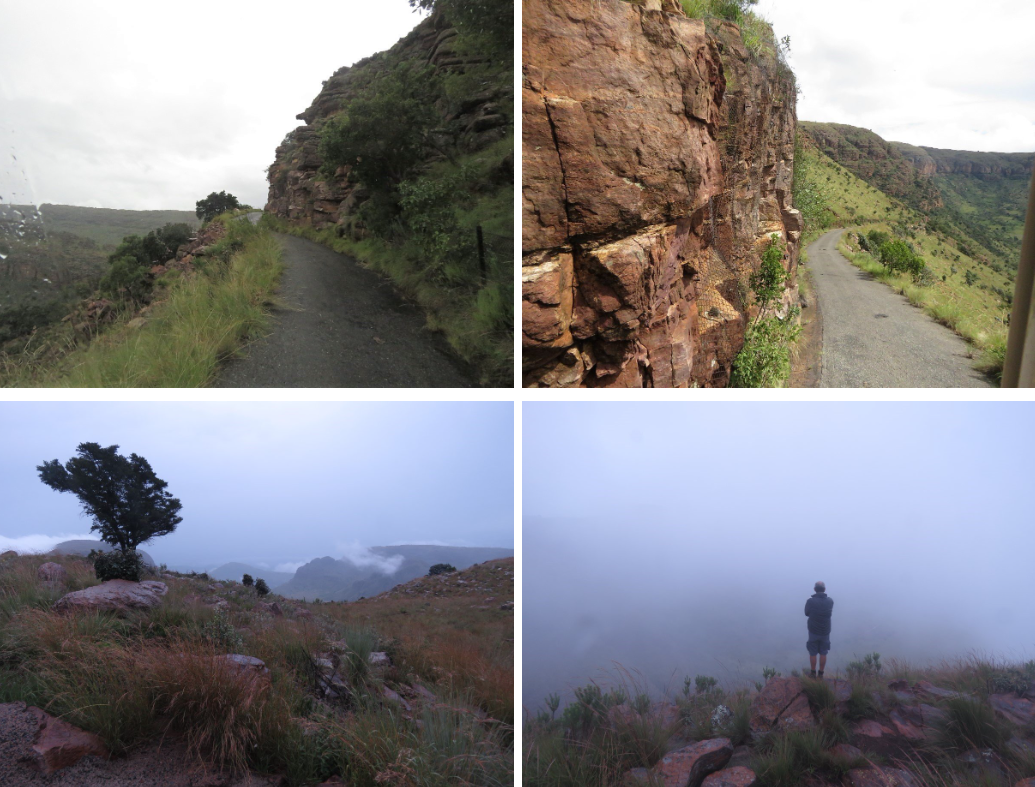
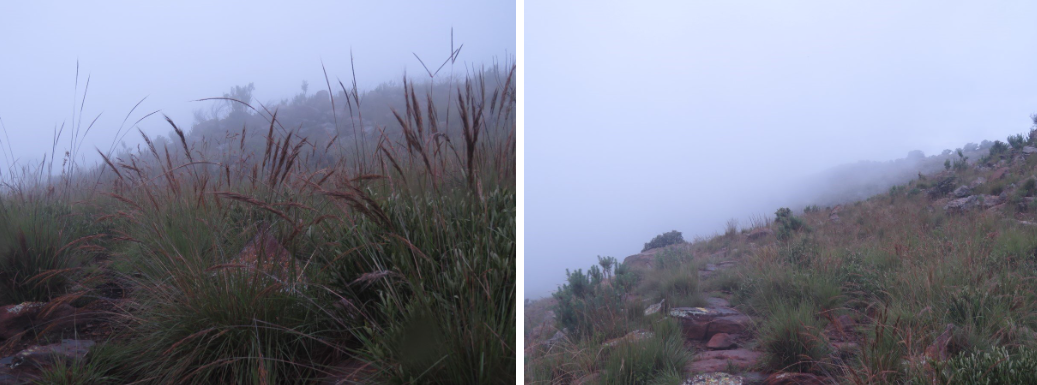
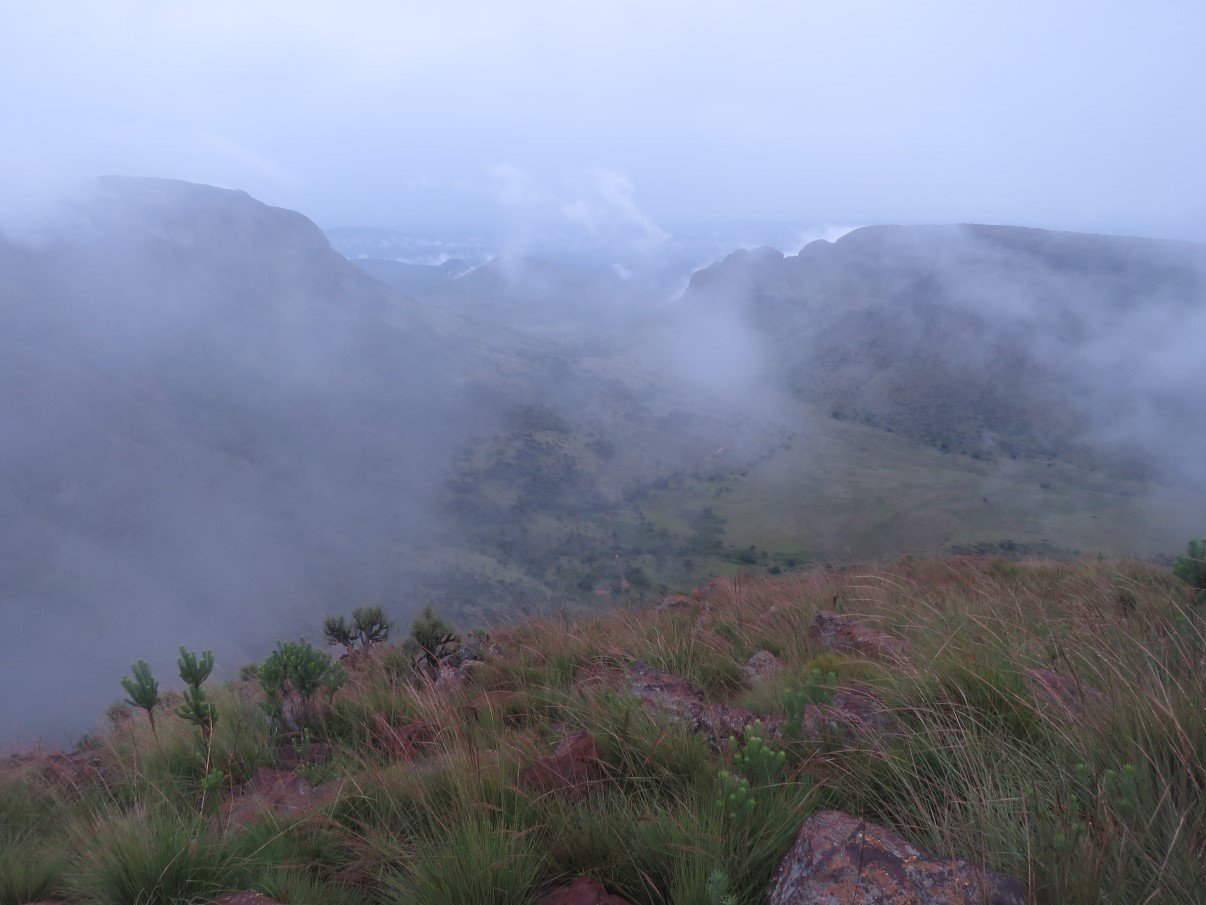
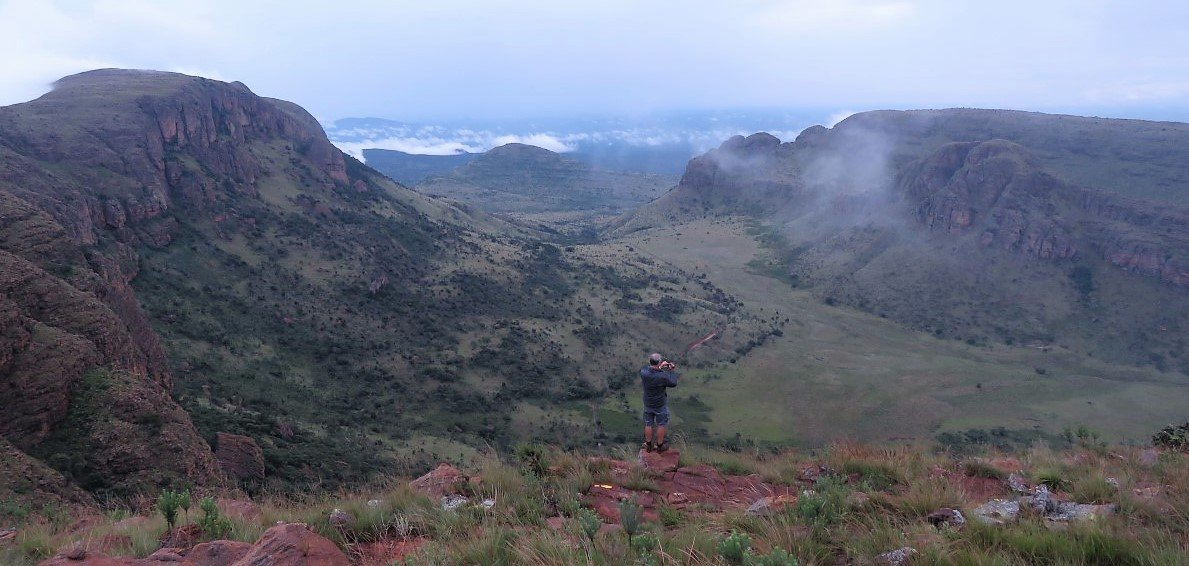
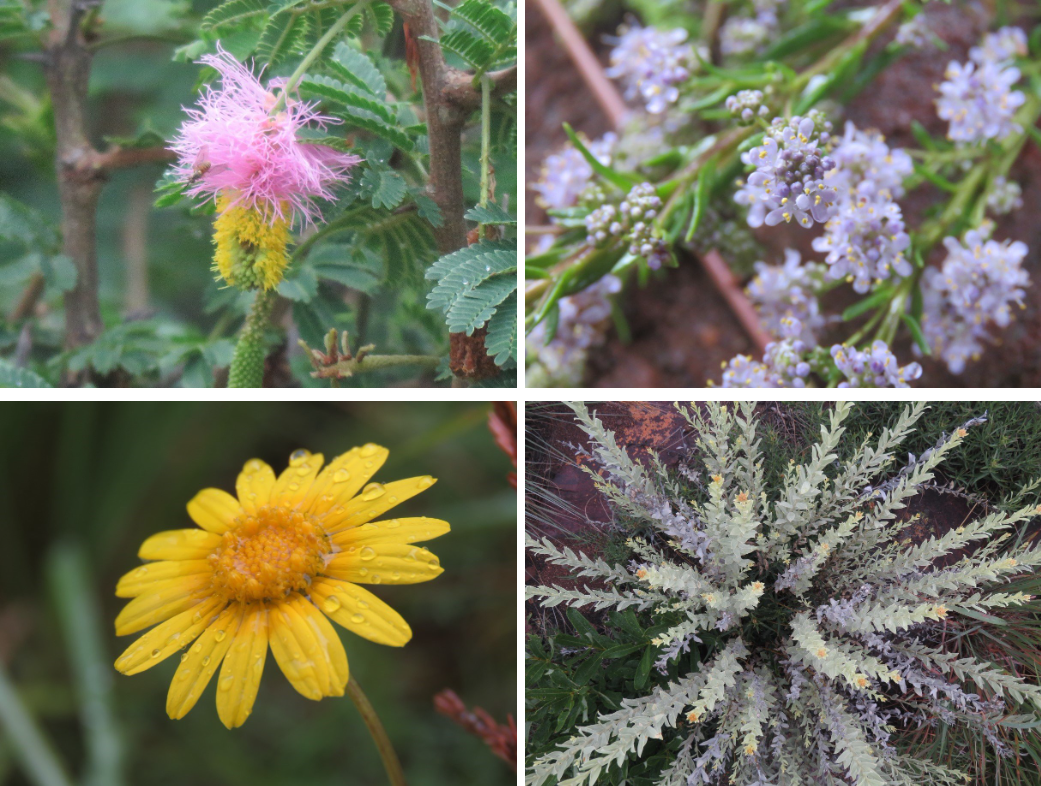
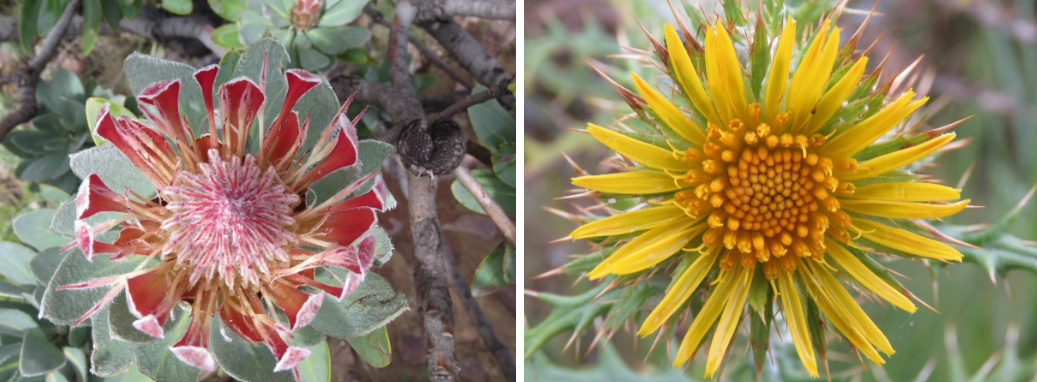
Although we didn’t see much of the Big 5, we did see a fair amount of animals: rhino, kudu, giraffe, zebra, jakkals, kingfisher, hornbill, heaps of springbuck, bluewildebeest, etc.
- On our second morning drive we saw from a distance a pile of something in the middle of the road, and getting closer, I initially thought it was a carcass with defined ribs sticking out. Getting more closer, however, we saw it was a dead zebra with a jackal nibbling on the carcass. Unfortunately, the jackal was very skittish and disappeared into the bush immediately. When we passed the zebra we were wondering what had happened because only its one hind leg seemed to have been damaged. We tried to park a bit further and wait till the jackal returned, but that didn’t happen. Stefaan set up the camcorder on a tripod and we drover further away in the hope it would lure back our little jackal. It did…, unfortunately not to nibble on the zebra again, You could see it was still very apprehensive of this big white thing (even though we were about 50m away) and after checking us out, it disappeared in the bush further up the road.
- On one of the other tracks we found other parts of a skeleton and a springbok skull in the mud, bearing testimony to the survival aspect of the wilderness.
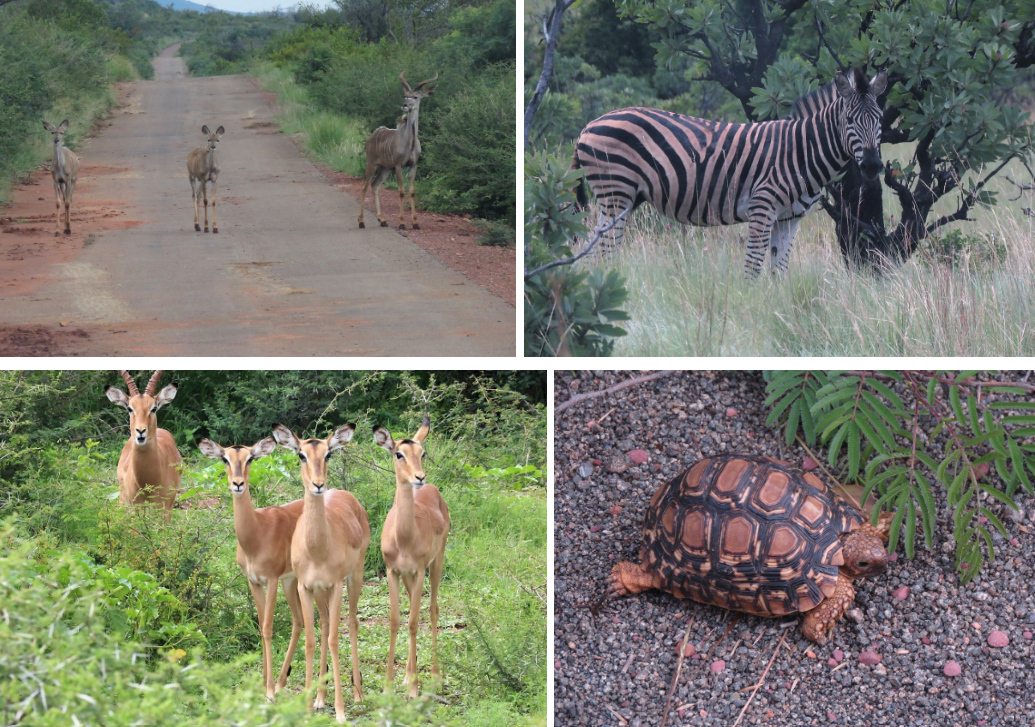
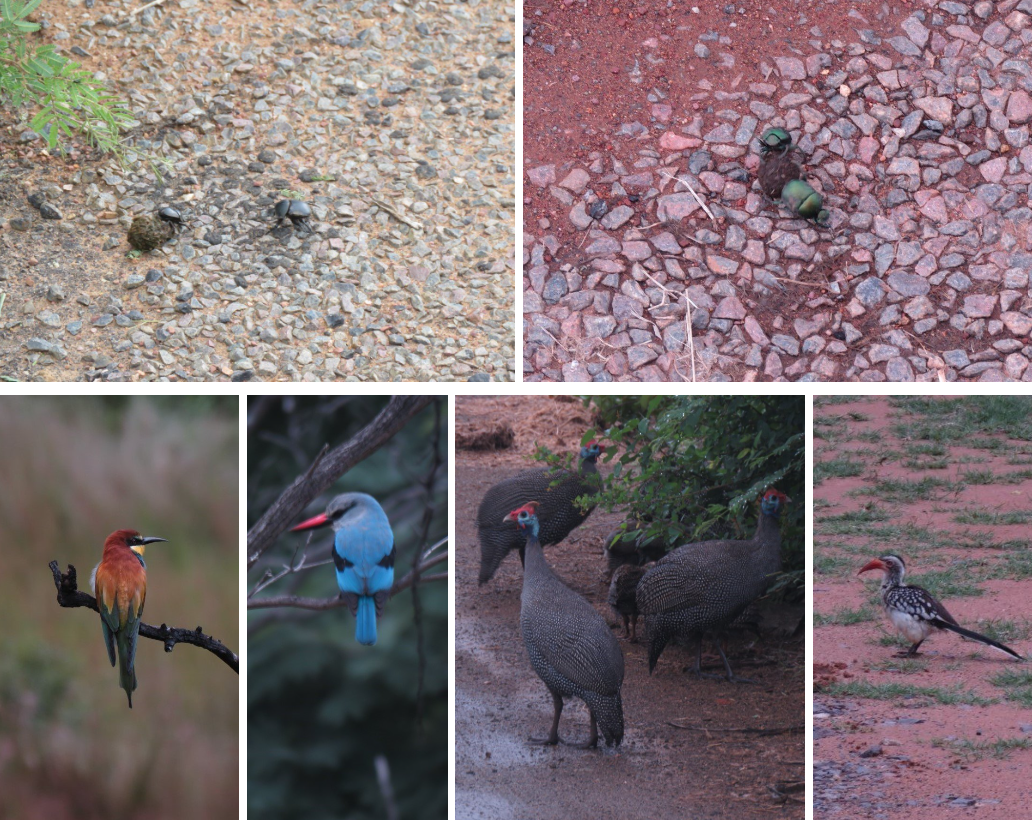

- The campsite was great with ample amenities (although not every site had a power point) and great views. The animals here seem to be reasonable ok with human visitors, because in the morning, the site was crisscrossed with spoor and decorated with little pooh-piles everywhere.
- When we returned to camp the second afternoon, the roads were flooded. It was amazing to see so much water in an area that we remember as red and dry! The abundance of water also showed in the vegetation. In comparison with our memory of the traditional thorn trees standing solitary in the red soil surrounded by dry and yellow grasslands, the rain had now exploded the under brush with the fresh lime greens of grasses and a carpet of greenish-yellowish plants that seemed out of place in this traditional dry country. The excessive moisture had also resulted in an abundance of fungi in all sorts of colours and sizes. Fungi is not something I would traditionally associate with the dry bushveld!
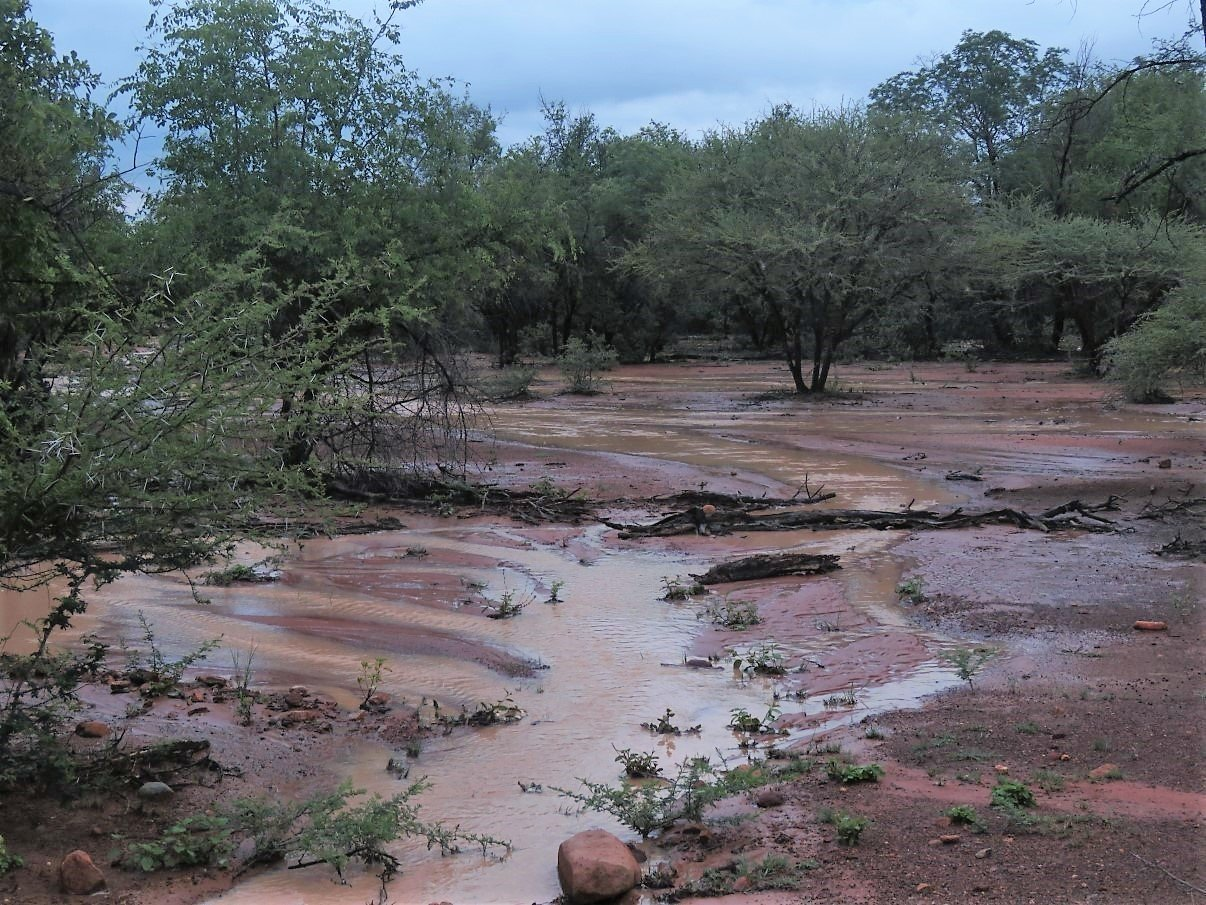
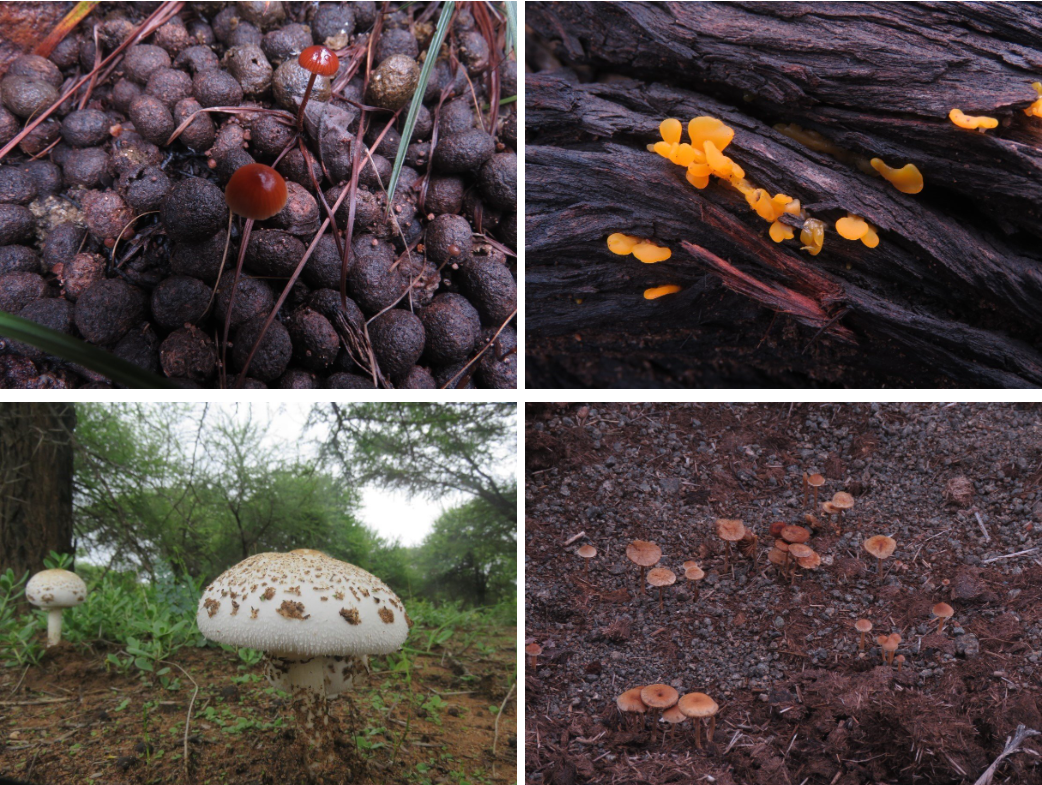
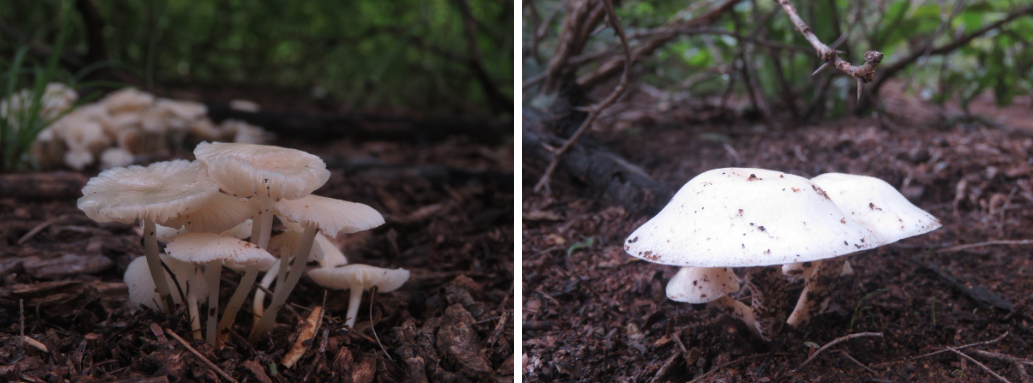
On our last morning in the park, we woke up to vervet monkeys playing in the tree just outside our bedroom window, baboons barking in the trees a bit further up and giraffes nibbling at the trees on the other side of the overgrown dam.
We took a drive on the last loops in the non-Big 5 part of the park, left the park and went looking for Seekoei gat (which eventually we couldn’t find). The dirt road was corrugated and muddy, with certain sections where we slithered and slipped our way through deep tracks in a field of mud.
We passed many a marula tree along the muddy road and eventually stopped under one for lunch. Stefaan harvested a few marula fruits to see how long it would take to ferment. Can we make our own Amarula liqueur?
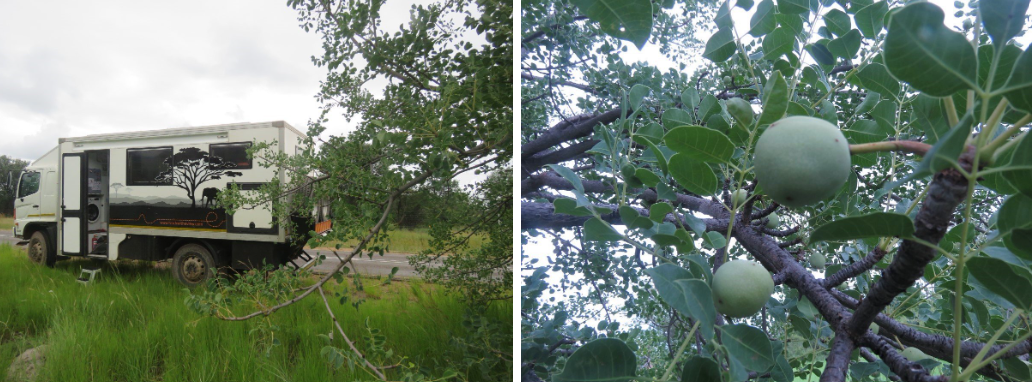
Back in town we first took in fuel and then we set out on the other aspect of our trip down memory lane: the road to Dwaalboom where Stefaan had been resident engineer on the construction of this road some 30 years ago. He was amazed at the different landscape:
- The landscape was green, green and even more green: bush and trees in glorious abundance everywhere, with a host of grasses standing tall along the edges of the roads. The bush was now intersected by huge fields under pivotal irrigation systems.
- We could see even clearer from this road how the mining has eaten away on the mountains. I his days the predominant colours had been red and yellow.
- … And the Crocodile River in full flow. When he worked there 30 years ago, the river had been dry with dried mud embankments of a few meters high. The one day when they experienced rain it had come down the river in a fairly good flow but it just soaked and disappeared into the dry riverbed. At that time, it seemed they hadn’t had rain for the past 7 years! With the rains of the past few weeks, the river had now filled up and was flowing very strong.
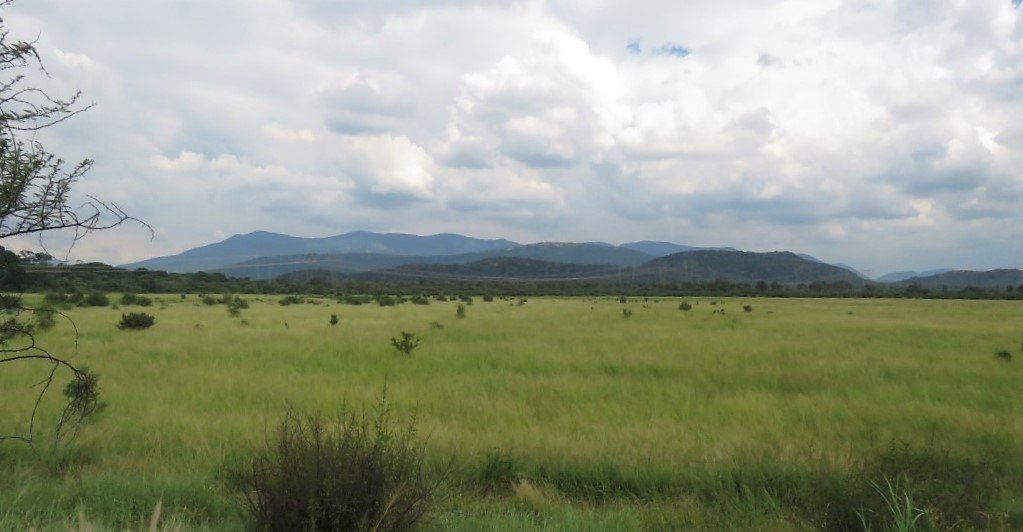
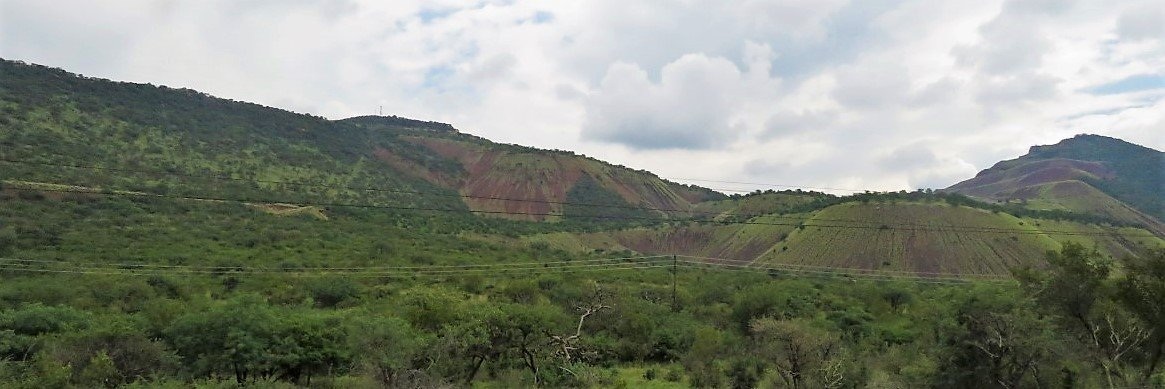
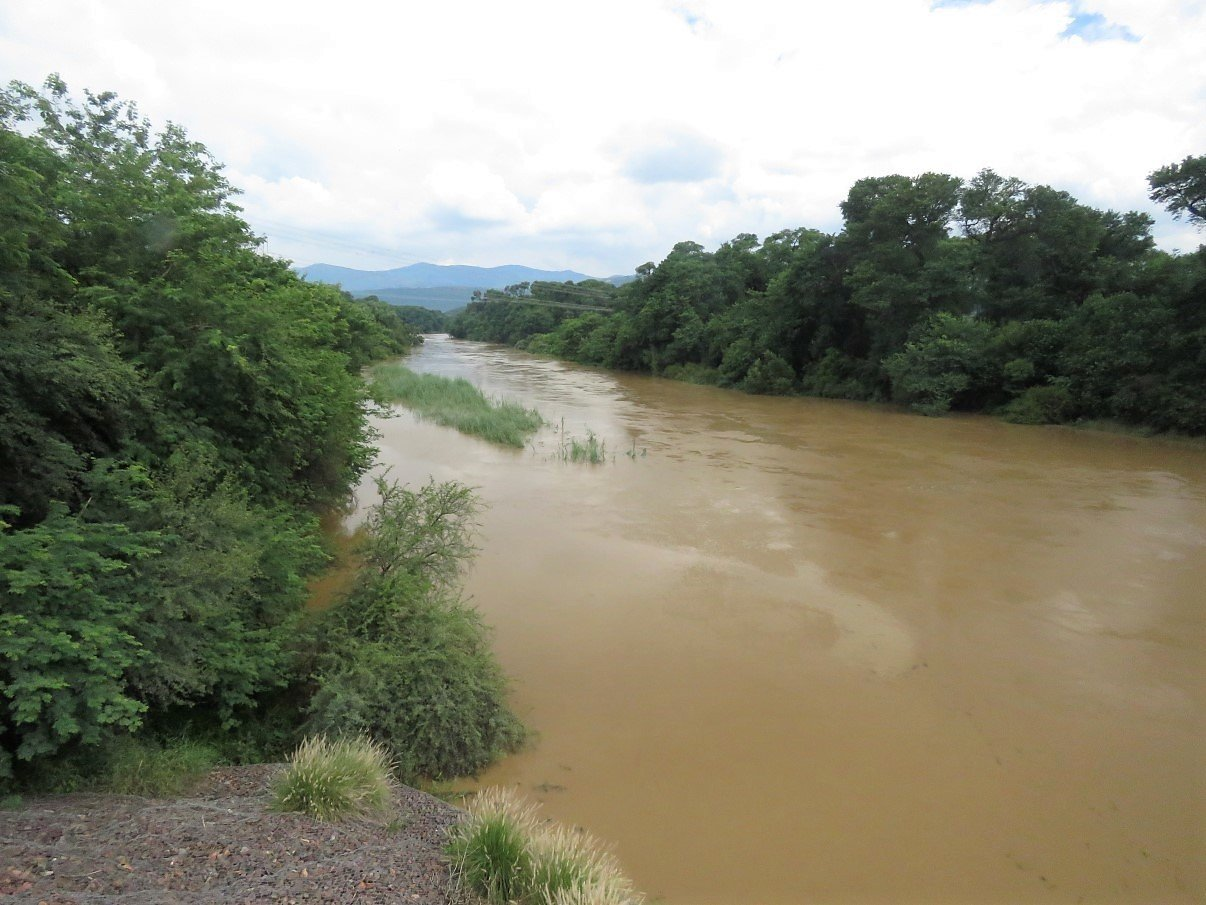
When we hit the Brits road again, we turned South on our way back to Johannesburg. At one particular moment we saw a black springbok but, as it is not so evident to brake at an instant’s notice on a national road with heavy iron ore truck breathing down your neck, the black springbok had to live in our minds and not on our photos. Not one minute later we passed Beestekraal Stasie. A quick look-around confirmed it was closed. But it looked safe enough, so we decided to park on their parking lot and stay there for the night.
Next morning we both spent time on laptop on website and youtube respectively and I was very happy to see our black springbok again – be it on the other side of a fence. We had seen a white albino springbok in Namaqualand, so this black one was as weird and special to see. We decided there was no rush to get back to Johannesburg and stayed around another night.
Next morning we saw the Stasie was open for business, but before we even got up to the point of walking into the Stasie for coffee and breakfast, the owner Lynette walked up to the truck and was over the moon with our Trokkie and our way of living. She took photos of our (very messy) truck but couldn’t stop talking about how jealous she was. When Stefaan mentioned that, with all the rainy weather, we struggled to keep our batteries fully charged, she invited us there and then to plug into the Stasie’s power outlet. We then had a delicious farm breakfast and chatted some more with Lynette.
After breakfast, Stefaan went to plug out and I went to the “pipi plek” (toilet) on the other side of the railway line.
When we said our goodbyes to Lynette we mentioned the black springbok. It seems they are purposely bred for the hunting industry. And the Beestekraal area seems to be home to several hunting farms. While chatting she mentioned the cattle auction just up the road.
So that’s where we went! Interesting and different!
- Besides the odd moment that you hear a number, you actually don’t understand a word of what the auctioneer is rambling about.
- It was interesting to see the healthy mix of black and white farmers both selling and buying.
- Some cattle must have been scared or at least uncomfortable because – even though they don’t wear pants- now we know where the expression “shitting your pants” comes from. And the odd one really didn’t want to be separated from family and put up a fight in the ring.
- The little Tin-Tin dog was running from one side to the other to check the cattle entering the pen and being chased out again.
- And look at that face! “I just want some love”!
After our 2-hour auction experience, we left Beestekraal and headed back to our temporary ‘home’ in Johannesburg.
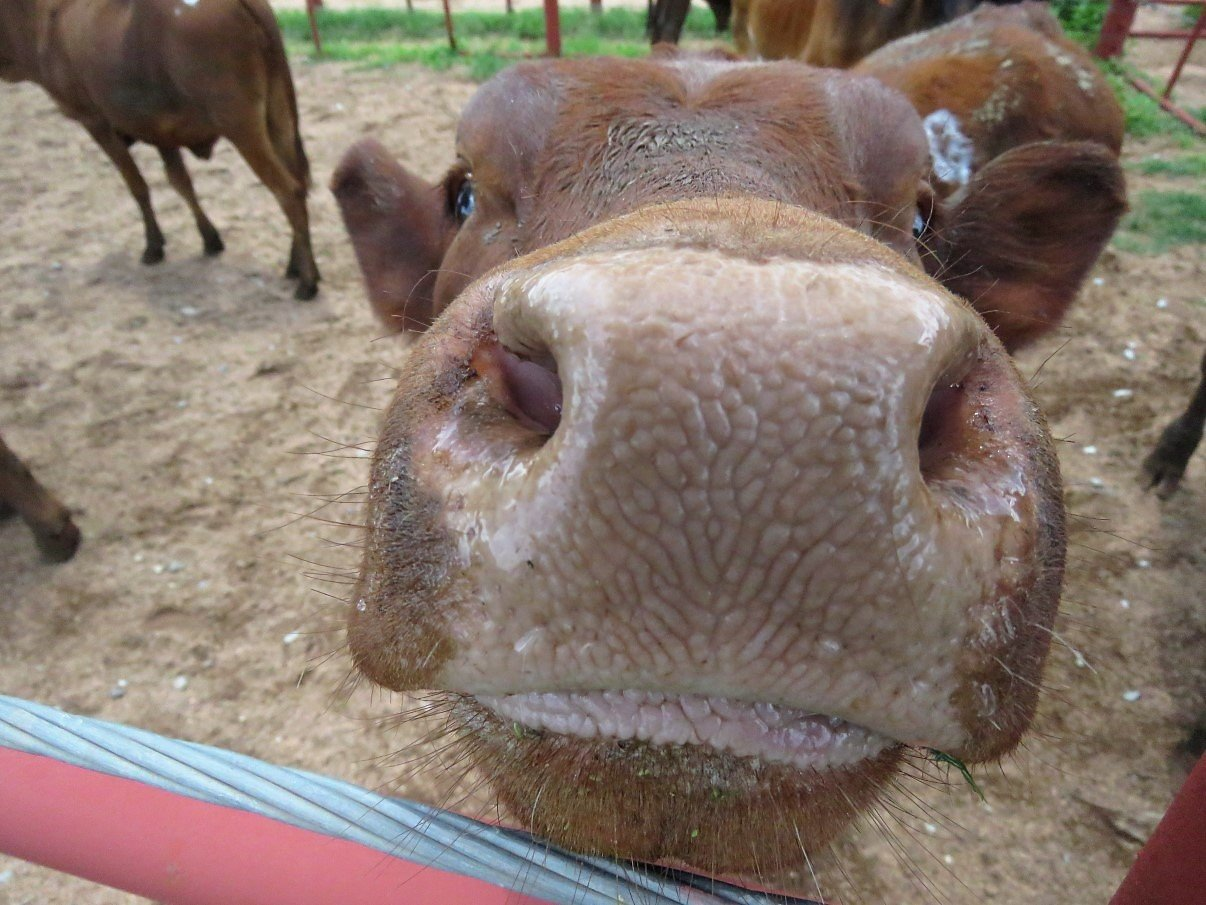
Enjoy our adventure in Marakele National Park.
For more photos, clips and videos follow us on
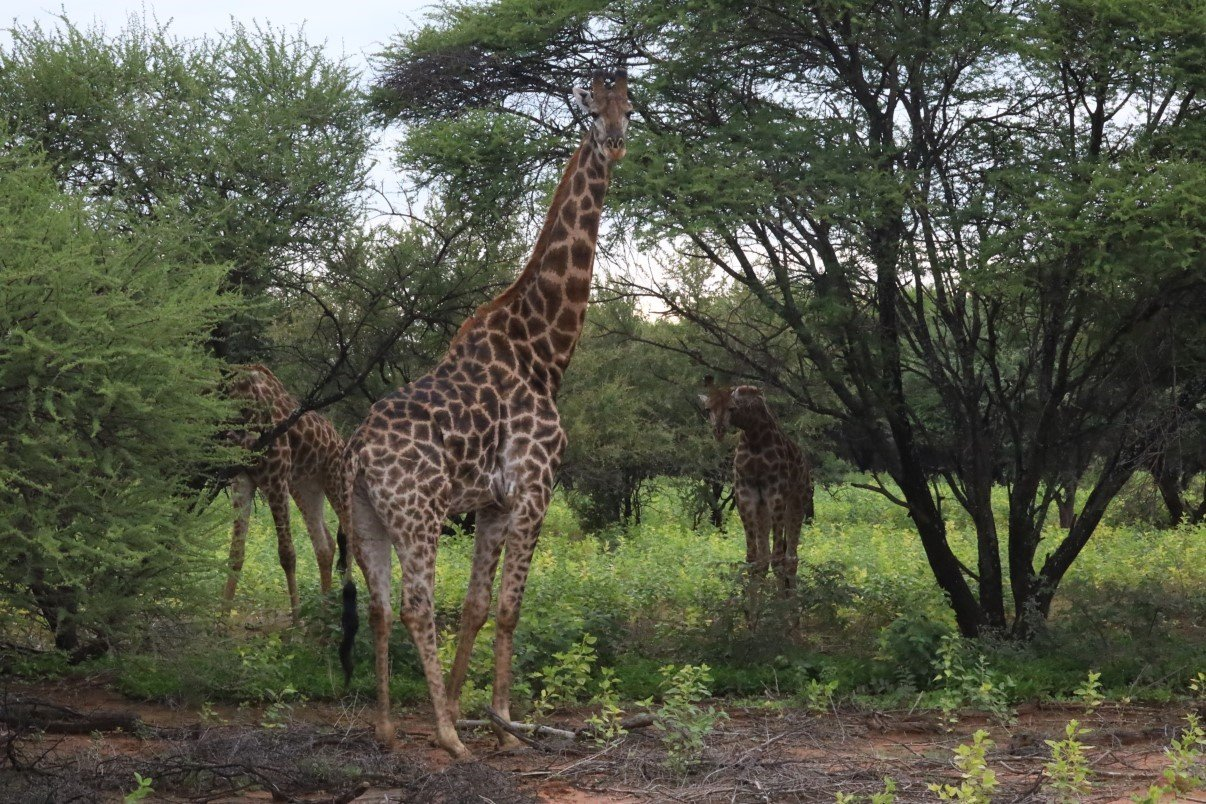
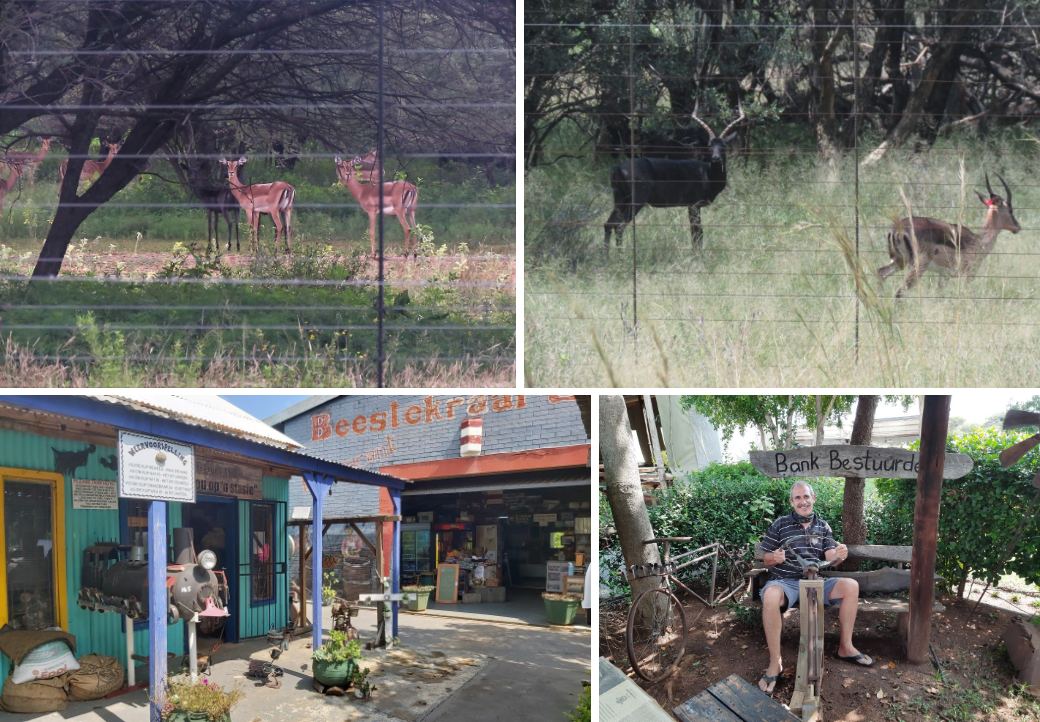
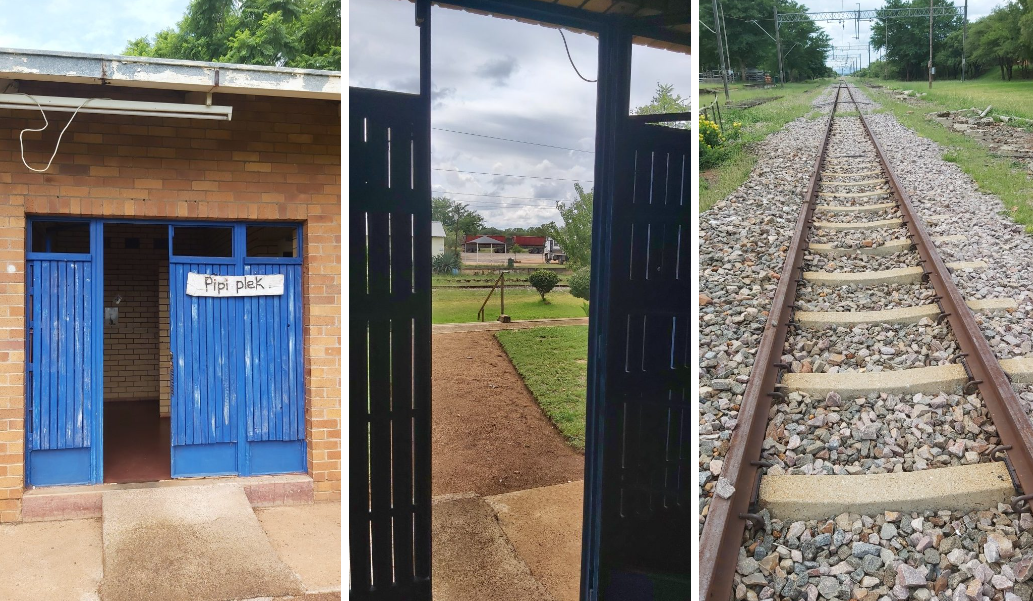
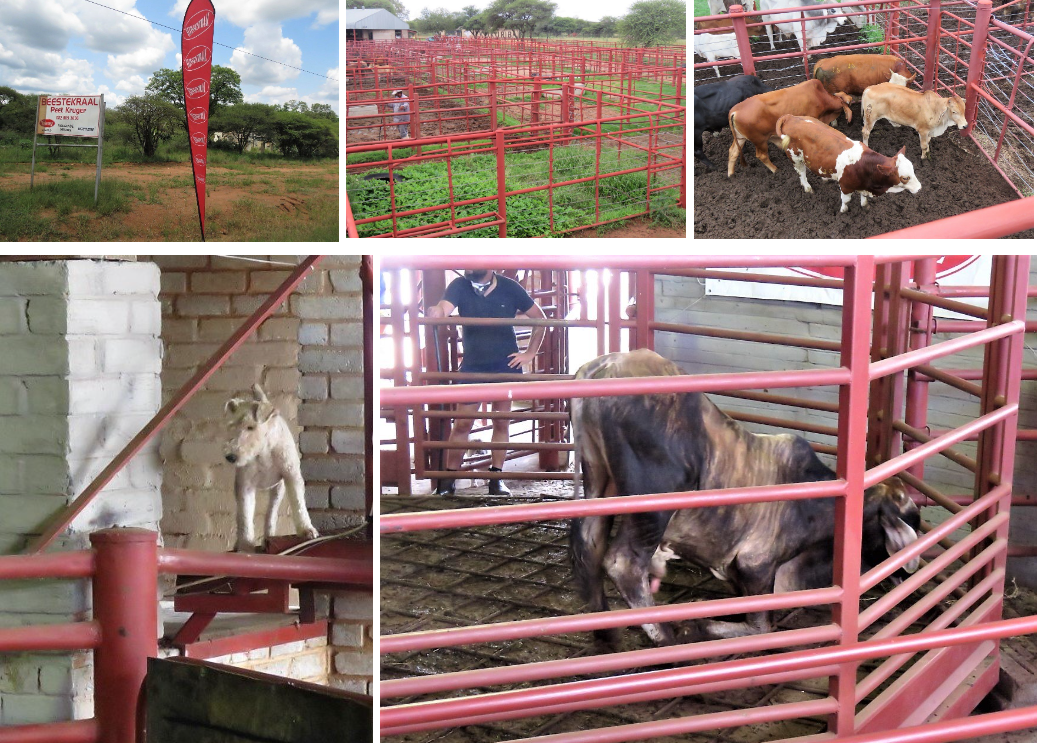


Thabazimbi and Marakele